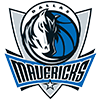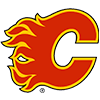A buddy of mine emailed the other day asking me who my fantasy football sleepers are for this year. Nowadays, with hundreds of sportswriters analyzing every move from training camps and putting it all on social media (follow me on Twitter, @MarkStopa), do sleepers even exist anymore? Is it even possible to have a fresh take nowadays, an opinion that isn't shared by many others in the industry?
As impossible as it might seem, that's my goal in this column. Be it fantasy football, gambling, survivor, game theory, or some combination thereof, Run-N-Shoot is my weekly attempt to offer a fun, fresh perspective on the NFL. So without further ado, let's get started by talking about a topic that's not terribly sexy, but one I've always considered an under-utilized aspect of our fake football game - auction strategies.
In my view, auction strategies aren't just important - they're nearly as important as the player valuations! If you don't agree, let me try to convince you.
Here's my take on how to prepare for your fantasy football auction.
1. Do a Mock. Or Five. You wouldn't buy a new car without taking it for a test drive, right? So don't let your auction day be the first time you've auctioned in 2014. And if you've never auctioned at all, then, well, get practicing.
2. Start with computerized dollar values. Everyone knows LeSean McCoy is more valuable than Ryan Mathews. How much more valuable, though, depends entirely on your league
A buddy of mine emailed the other day asking me who my fantasy football sleepers are for this year. Nowadays, with hundreds of sportswriters analyzing every move from training camps and putting it all on social media (follow me on Twitter, @MarkStopa), do sleepers even exist anymore? Is it even possible to have a fresh take nowadays, an opinion that isn't shared by many others in the industry?
As impossible as it might seem, that's my goal in this column. Be it fantasy football, gambling, survivor, game theory, or some combination thereof, Run-N-Shoot is my weekly attempt to offer a fun, fresh perspective on the NFL. So without further ado, let's get started by talking about a topic that's not terribly sexy, but one I've always considered an under-utilized aspect of our fake football game - auction strategies.
In my view, auction strategies aren't just important - they're nearly as important as the player valuations! If you don't agree, let me try to convince you.
Here's my take on how to prepare for your fantasy football auction.
1. Do a Mock. Or Five. You wouldn't buy a new car without taking it for a test drive, right? So don't let your auction day be the first time you've auctioned in 2014. And if you've never auctioned at all, then, well, get practicing.
2. Start with computerized dollar values. Everyone knows LeSean McCoy is more valuable than Ryan Mathews. How much more valuable, though, depends entirely on your league settings. So, you tell me - how much more valuable is McCoy than Mathews in a 10-team league that starts two RBs and a flex and has four bench spots compared to a 14-team league with two RBs, two flex and six bench spots? No response? That's OK. I don't have an answer, either - certainly not off the top of my head. That's why my preparation for every auction begins with inputting my league specs into RotoWire's Custom Values chart (or something similar, but, hey, I'm a company guy) and printing out hard copies. That way, you have a dollar valuation next to every single NFL player.
I'm not saying you have to adhere to the valuations religiously. If RotoWire's software tells you McCoy is worth $45 in your league, but you're convinced he's going to have a down year, then downgrade him to $40. Or if RotoWire says Mathews is worth $20 but you're certain this is the year he'll stay healthy, upgrade him to $24. The point is to start your auction with a list of all players and a dollar value next to them (based on your league's specs).
Please, though, whatever you do, don't be lazy and merely rely on the values in your league's draft page. Chances are, many of your league-mates are relying on those same values, and those values often aren't tailored to your league's specifications.
I like printing out my own lists, something separate from the league draft page, then writing a dollar amount next to each player's name. (You don't have to start from scratch - print the names by position from RotoWire's Cheat Sheets, then get the dollar values from the Custom Values chart.) When the bullets are flying during the auction, and you have to make a split-second decision, that's the info you need to ascertain if you're making a good buy.
Separating those lists into tiers is also a good idea. You want to know when the last couple players in a tier are getting nominated.
3. Channel Your Inner Nerd: Find the depth, by position. Most fantasy owners spend a lot of time deciding which superstars to buy on draft day. For me, it's more important to decide the position you're willing to scrimp on - who you're targeting in the endgame. And I don't mean specific players - I mean positions.
The premise of this strategy is that it's not possible to have stars at every position. Even if you don't go "stars and scrubs," you're going to be thin somewhere. Before your auction, figure out which position(s) you're most willing to scrimp on.
It's easy to apply this concept loosely. For example, if you're in a 10-team league with shallow benches that starts one quarterback, everyone knows starting the 10th-best fantasy QB each week isn't such a bad thing - the QB pool is just that deep.
For me, the decisions about depth aren't that simple. To truly evaluate - to figure out which positions are deep and which aren't - you need to figure out how many players will be drafted from each position. You won't know exactly - some newbie might draft four quarterbacks, and the flex spots create a variable here - but you need to approximate. To show why this can make a world of difference, let me give two examples. (Warning: The next few paragraphs are really dry. Enjoying it forces you to channel your inner nerd. But the goal is to win fantasy titles, not pick up chicks, so pull out your calculator and go with me.)
First, suppose your league starts 1 QB, 2 RBs, 3 WRs, 1 flex (RB/WR/TE), 1 TE, 1 K and 1 D with four bench spots. In that format, you know someone in the league is going to be starting the 10th-best QB, 25th-best RB, and 35th-best WR each week. (With 10 teams each starting one QB, 10 X 1 = 10 total QBs; 10 teams each starting two RBs each week, 10 x 2 = 20, plus five more because roughly half the teams will fill their flex with a RB; 10 teams each starting three WRs, 10 x 3 = 30, plus five more for the flex spots of the teams who don't start a RB there).
So that's 10 QBs, 25 RBs and 35 WRs, not including bench spots. Now go to your pre-printed list with dollar values. The QBs listed 9, 10 and 11 are pretty good - Matthew Stafford, Cam Newton and Colin Kaepernick (on RotoWire's Cheat Sheet). The RBs listed 24, 25 and 26, conversely, have some question marks - Ben Tate, Shane Vereen and Trent Richardson. The WRs listed 34, 35 and 36 are Mike Evans, Dwayne Bowe, Golden Tate. Based on this format, quarterback is a really deep position, while running back and receiver are much thinner. So I'd go into this auction planning on getting the 9th- or 10th-best QB, saving my money there and spending on other positions. When Aaron Rodgers goes for $45 early, no worries - you know you're going to be just fine getting Stafford or Kaepernick for a few bucks late in the auction.
If teams start drafting a second quarterback, you'll need to re-adjust mid-auction.
Flexibility is key in auctions. But with only four bench spots, the chances of that are fairly rare, so this strategy feels good in this format.
Now suppose your league has 14 teams and starts 1 QB, 2 RB, 3 WR, 1 Flex (QB/RB/WR/TE), 1 TE, 1 K and 1 D with 7 bench spots. RotoWire's Custom Values chart tells you quarterbacks are much more valuable in this league, which makes sense. Not only are there 14 teams instead of 10, but if you can start a second quarterback as a flex, you really need to take advantage, since QBs score so much more than other positions.
In this format, I'd estimate 25 QBs will be drafted as starters (one for each of the 14 teams, plus 11 more for the owners who are able to get a second serviceable QB in their flex spot), 30 RBs (14 x 2 = 28, plus a couple of running backs at flex), and 43 WRs (14 x 3 = 42, plus one at flex). In this format, this is where the depth at receiver really becomes apparent. Looking at RotoWire's Cheat Sheet, there are receivers in the late 30s, 40s and even 50s I can live with. Kenny Stills. Kendall Wright. DeAndre Hopkins. Jarrett Boykin. That's certainly preferable to getting stuck with a starting quarterback like Jake Locker or EJ Manuel. In this format, I'll gladly try to fill my roster with receivers in the endgame, as I'm not going to allow myself to get stuck having to bid on Manuel or Locker because I need a QB.
Regardless of your auction's format, make sure you calculate how many players will be drafted from each position. That's how you'll best be able to tell where the bargains will come in the endgame.
Oh, and if your league is extremely shallow or extremely deep, this approach works well, too.
In shallow leagues, the "worst" players taken at any position will still be good players, and the replacement value of players on waivers will be high. That's why "stars and scrubs" usually works best in those formats. In really deep leagues, there might not be any positions where anyone good is available at the end of the auction. In those formats, avoiding "stars and scrubs" and going with a more balanced approach makes more sense. Either way, you won't know for sure unless you channel your inner nerd and do the math!
4. Targeting Values or Specific Players. We could debate the merits of drafting like a genius (i.e. being confident you know which players will have great years and targeting them, even if it means overpaying) versus value-drafting (i.e. not targeting any specific players in advance, just taking those who are cheaper than they should be). For me, the answer is both.
If you determine what positions will be the deepest based on your format, you can get values at those positions in the endgame, while still enabling yourself to target specific players at the positions you've decided justify spending big bucks.
5. Adjust Based on the Room. You can plan, study, mock and watch every preseason game, yet nothing will ever prepare you for the dynamics of each particular auction. Maybe your opponents view things the same way you do, so nobody is paying for quarterbacks. Maybe everyone is reading on Twitter about zero-RB strategy, so everyone is avoiding stud running backs. If LeSean McCoy or Aaron Rodgers is going for 60 percent of the dollar value you wrote on your chart, you might just need to adjust on the fly and hit +1.
Whatever is happening early, realize - it always evens out before the auction ends. If your opponents are over-spending early, deals will be there late. If the stud running backs went cheaper than they should have, then there will be bidding wars later for the fringe running backs. You must be flexible and be willing to take the deals as they're presented to you, whether it's at the beginning of the auction or the end.
Remember, you have those player values on your lists for a reason - if your league is straying from those numbers early on, it will even out before the auction ends.
6. Know Your Competition. It's always interesting to play fantasy football with a bunch of guys who write about fantasy football for a living. After all, by the time auction day comes, we all know who each other likes! That's always an advantage/disadvantage in an auction format.
Even if you're not playing with "experts," chances are that your league has the same dynamic. Every league does. There's that obnoxious Giants fan who overpays for Eli Manning and Victor Cruz every year.
It's risky to get into a bidding war with owners like this, as you never know when they may suddenly drop out of the bidding. But sometimes, it makes sense if you see that owner has $100 of auction money left and nobody else has more than $80 to throw Eli Manning's name out for a nomination to flush out some of his money.
7. Auctions are Better. I'm sure I've missed a billion other ideas/concepts about auctions. We could chat about this in the comments all day. One thing, though, is clear ... auctions are better than drafts. They just are. So get in the game. If you're still drafting, you're missing out on a format that's far more competitive and much more fun.



































